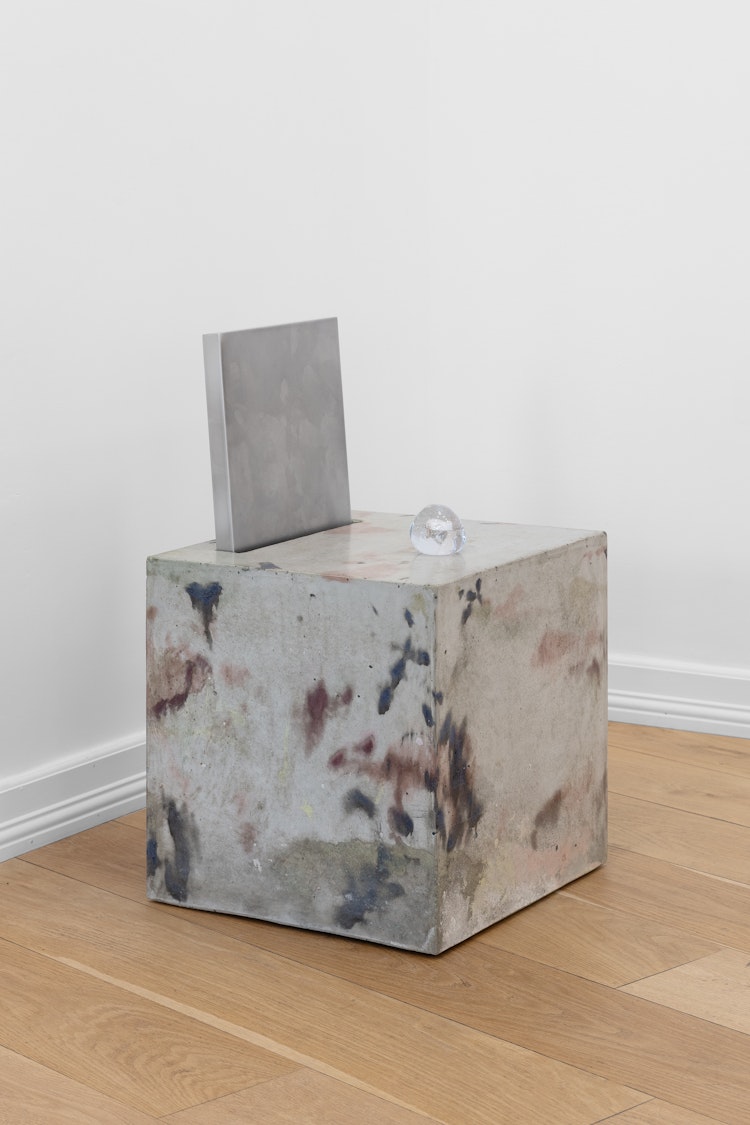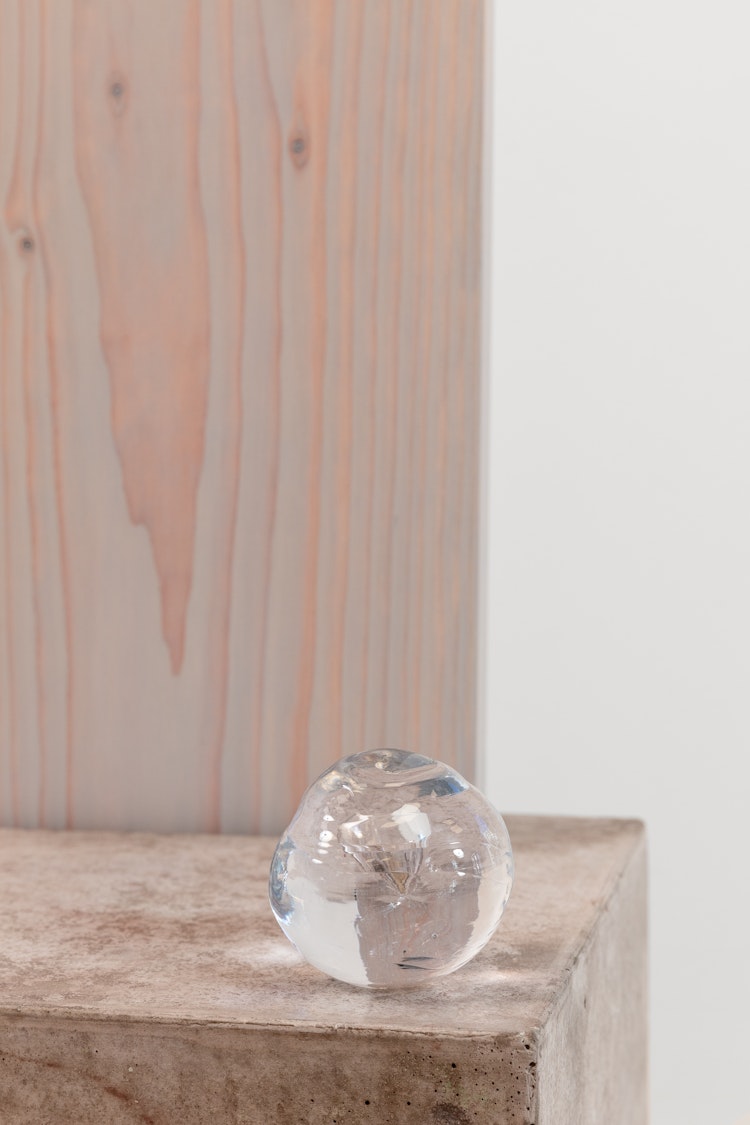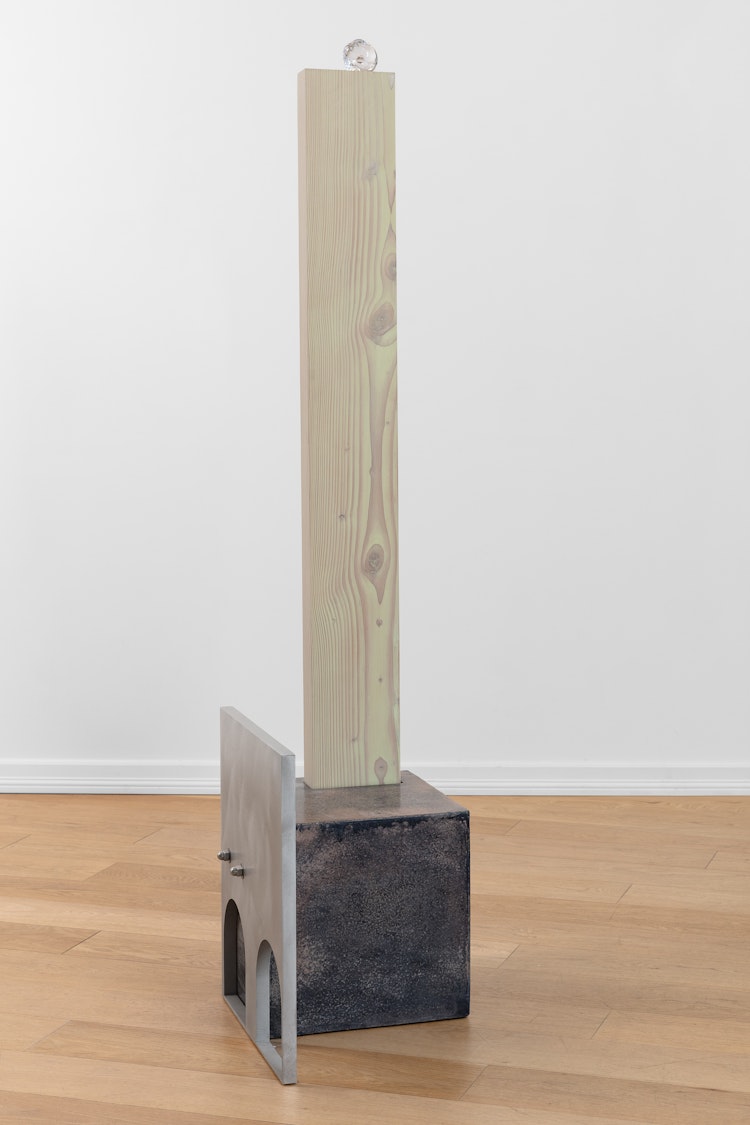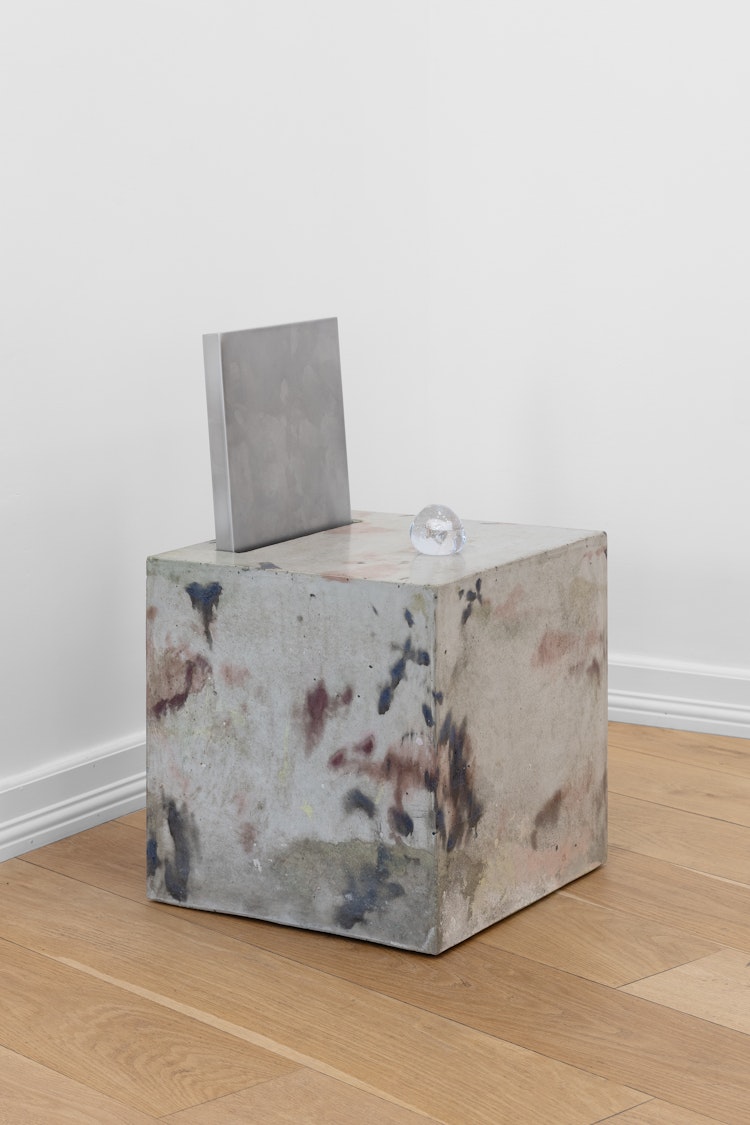Vitality and Self-interest


In Magnus Pettersen's first solo exhibition at QB Gallery, a new series of sculptures are presented which transgress the boundary between artworks and functional objects. With a formal approach, Pettersen combines various units of pigmented concrete, cast with varying textures and polychromatic surfaces, with other materials such as wood, glass and aluminium. The question of what arises when design is no longer bound by functionality, but also reaches for artistic aesthetic and ethical freedom, is central to Pettersen's artistry. The exhibition title is, among other things, inspired by the book 'Vibrant Matter' by the philosopher Jane Bennet, which explores man in relation to his surroundings and the vital force inherent in material formations.
__
Earlier this summer, I had the pleasure of visiting Magnus Pettersen in the studio where he recently relocated together with his work and life partner, Lea Hein. I looked forward to this visit, partly because of the anticipation of seeing the work-in-progress of the sculptures for his upcoming Oslo solo show, and partly due to the extravagance of the location itself. The atelier is nested in one of the gigantic arms of the star-shaped Vridsløselille Fængsel, a former state prison in the western suburbs of Copenhagen.
Seconds after walking into the big room that constitutes the studio's main working space, a familiar yet undefined feeling stung me. A mysterious quality was hanging in the air, and even the most ordinary objects seemed to vibrate from within, as if exposed to an inaudible low-pitch sound. We started the visit by drinking a cup of coffee and then moved on to look at the works, the majority of which were still unfinished. Even if in a cocoon stage, a few of Pettersen's signature traits were already marking their presence: the bold juxtaposition of cold and warm materials, the coexistence of soft, pastel colors with sharp outlines and resolute edges, and a general predisposition to playfulness. But there was more than my eye could meet. At one point, Magnus grabbed an unevenly formed glass sphere from the large desk covered with tools and sketches and placed it on the corner of one of the chair-shaped sculptures' concrete seat. It was at that moment that the aura of his new sculptures became clear to me.
I took the knobbly ball in my hand and felt projected to another space and time - the kind of sudden jump into a parallel dimension that was so easily accessible when playing make-believe as a kid and is now a rare and precious occurrence. In the straightforwardness of their physical presence, Pettersen's sculptures are very much anchored to reality, with each material showing up in their most authentic expression: here is a long aluminum bar, here is a concrete cube, here is wood that looks like wood. At the same time, similarly to how a stick becomes a magic wand in a child's fantasy, each form, detail or material was ready to transform into something else as soon as a hint caught my attention. The glass sphere was my hint, and as soon I saw it, I could not unsee it: in front of me, a metaphysical universe unfolded itself - one made of arches, columns and towers, me the wizard, and the sculptures my palace and my throne.
On the way home from my visit, I recalled the intuitions that came to me at the studio so they would not get lost in the flow of everyday life. Why did these new works succeed so well in creating a sense of ambiguity and contemplation? Where did the intrigue come from? My guess is that the compositions presented in Vitality and Self-interest create a perfect short circuit by exploring the unfamiliar within the familiar. When all the elements of a configuration are recognizable, but the overall result surpasses their physical manifestation, a spell happens. And the simpler is the arrangement, the stronger is the effect that comes out of it.
When built in the mid-19th century, Vridsløselille penitentiary was designed in accordance with the Philadelphia System: an approach to prison management emphasizing principles of solitary confinement to prevent negative influences and foster self-reflection. Inmates were permitted outside their cells one hour a day and only while wearing a mask, rendering them anonymous, and the panoptical architecture allowed guards to observe all inmates without them being able to see who was watching them.
I like to think that Magnus Pettersen is rebalancing the dehumanization of this method through his artistic efforts. His sculptures offer a space of free contemplation and create a new reality that is simultaneously dreamlike and rooted in the concrete world. Suppose all things possess a form of agency, as political theorist and philosopher Jane Bennet proposed. In that case, the "things" I saw at Magnus' studio actively contribute to restoring a more equal sense of universal self, fueled by fantasy and graciousness.
- Paola Paleari, Italian writer, editor and curator, September 2023






















What are you looking for?